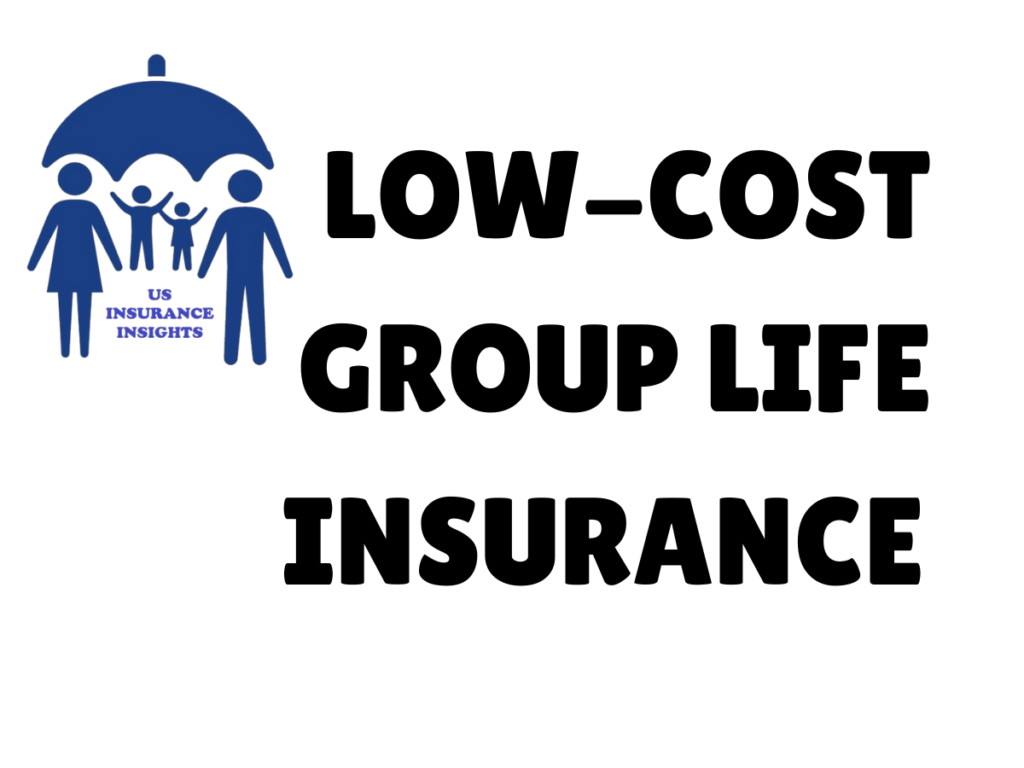What is Low-Cost Group Life Insurance?
Low-cost group life insurance is an affordable way to secure financial protection for employees, association members, or other groups. Unlike individual policies, group life insurance offers lower premiums because the risk is spread among multiple people.
If you’ve ever wondered how to protect your family without straining your budget, low-cost group life insurance could be the perfect solution. This type of insurance ensures that, in the event of an untimely death, your loved ones receive financial support to cover funeral costs, outstanding debts, and daily living expenses.
Why Should You Consider Low-Cost Group Life Insurance?
Imagine this: Sarah, a hardworking mother of two, suddenly lost her husband, John, due to a heart attack. Fortunately, John’s employer-provided low-cost group life insurance helped cover funeral expenses, mortgage payments, and daily living costs. Without it, Sarah would have faced financial hardship and struggled to support her children’s education and basic needs.
This real-life scenario highlights why having group life insurance is essential. It provides financial security, ensuring your loved ones don’t struggle during tough times. The affordability and accessibility of group life insurance make it a smart choice for employees and organizations alike. With a small payroll deduction, employees can access substantial coverage without undergoing lengthy medical examinations or paperwork.
How Does Low-Cost Group Life Insurance Work?
Group life insurance is typically offered through an employer or an organization. Here’s a step-by-step breakdown of how it works:
1. Employer or Organization Offers the Policy
Companies, unions, or professional associations negotiate group life insurance plans with insurance providers. These plans are often included as part of employee benefits, providing financial security at no extra effort for the insured individual.
2. Employees or Members Are Automatically Enrolled
Most employers automatically enroll full-time employees in their group life insurance plan. Others allow voluntary enrollment at reduced rates, making it an excellent opportunity for employees to gain life coverage without high out-of-pocket costs.
3. Premiums Are Lower Than Individual Plans
Since the risk is shared among many individuals, low-cost group life insurance premiums are significantly lower than private policies. Employers often subsidize the cost, making it even more affordable for employees.
4. Coverage Is Usually Based on Salary
Many plans provide coverage worth one to two times an employee’s annual salary. This ensures that, in the event of death, beneficiaries receive a meaningful payout that can help cover essential financial responsibilities such as rent, mortgage, and outstanding debts.
5. Option to Purchase Additional Coverage
Some plans allow participants to buy more coverage at competitive rates. This is particularly beneficial for individuals with dependents or significant financial obligations.
6. Benefits Are Paid to Beneficiaries
In the event of death, beneficiaries receive a lump-sum payment, ensuring financial support for their future. This lump sum can be used for funeral expenses, educational costs, or as a financial cushion during difficult times.
Types of Low-Cost Group Life Insurance
1. Basic Group Term Life Insurance
This is the most common type of low-cost group life insurance. It provides coverage for a specific period, usually as long as an employee remains with the company. If the employee leaves or retires, the coverage often ends unless it is converted to an individual policy.
2. Supplemental Group Life Insurance
Employees can purchase additional coverage at a lower rate, extending financial protection beyond the standard plan. This option is useful for individuals who want a higher payout amount for their beneficiaries.
3. Accidental Death & Dismemberment (AD&D) Insurance
This provides extra benefits if death or injury occurs due to an accident. AD&D insurance often covers severe injuries such as loss of limbs, blindness, or paralysis.
4. Permanent Group Life Insurance
Less common but available, this policy builds cash value over time and remains active even after leaving the company. This type of insurance is beneficial for individuals looking for long-term coverage.
Pros and Cons of Low-Cost Group Life Insurance
✔️ Pros:
- Affordable premiums compared to individual policies
- No medical exams required for basic coverage
- Convenient payroll deductions for premium payments
- Guaranteed acceptance for eligible employees or members
- Peace of mind knowing your family is financially secure
❌ Cons:
- Coverage ends when you leave the company (unless portable)
- May not offer sufficient coverage for larger families
- Limited flexibility compared to private policies
- Not a substitute for comprehensive individual life insurance
How to Get Low-Cost Group Life Insurance
Step 1: Check If Your Employer Offers It
Many employers include low-cost group life insurance as part of their benefits package. If your employer does not provide it, check if your professional association or union offers similar plans.
Step 2: Review Coverage Details
Understand the amount of coverage, premium cost, and eligibility requirements. Compare the coverage with your personal financial obligations to ensure it meets your needs.
Step 3: Decide If Additional Coverage Is Needed
If the standard plan isn’t enough, consider supplemental group life insurance to increase your payout amount.
Step 4: Name Your Beneficiaries
Ensure your loved ones are financially secure by updating beneficiary information. Keeping this information current is essential to avoid complications during claims.
Step 5: Maintain or Transfer Coverage When Changing Jobs
Ask about portability options to keep your coverage even if you switch employers. Some policies allow you to convert group coverage into an individual plan for continued protection.
Who Can Benefit the Most from Low-Cost Group Life Insurance?
- Employees looking for an affordable way to protect their families
- Small business owners providing cost-effective benefits to their staff
- Unions & associations offering members financial security
- Young professionals who haven’t yet purchased individual life insurance
- Parents who want peace of mind knowing their children are protected
FAQs About Low-Cost Group Life Insurance
1. Is low-cost group life insurance worth it?
Absolutely! It’s a budget-friendly way to secure financial protection for your loved ones. Even though coverage may not be as extensive as an individual policy, it provides a valuable financial cushion.
2. Can I keep my group life insurance if I change jobs?
Some policies allow portability, but most coverage ends when you leave your job. It’s best to check with your employer and insurer about conversion options.
3. How much coverage do I need?
Experts recommend coverage of 5-10 times your annual salary, depending on your financial responsibilities and dependents.
4. Does group life insurance require a medical exam?
Basic coverage typically doesn’t, but higher coverage amounts may require minimal health screening.
Final Thoughts: Secure Your Future Today
Low-cost group life insurance is an easy, affordable way to provide peace of mind for you and your family. Whether you’re an employee, employer, or member of an organization, this type of insurance offers essential financial protection without breaking the bank.
Don’t wait until it’s too late—check your eligibility today and ensure your family’s security.

